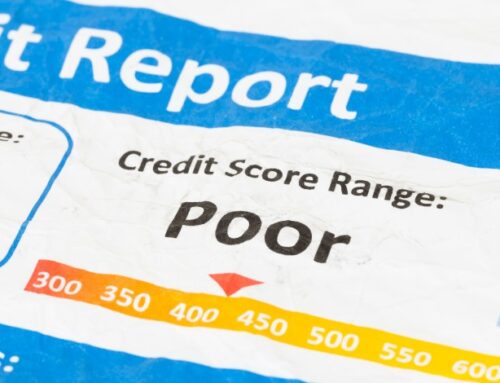When you’re managing your personal finances, you can often come across various tools and products designed to help you achieve your goals. One such financial tool is the personal line of credit.
While it shares similarities with credit cards and traditional loans, a personal line of credit (LOC) offers unique features and benefits that can be advantageous in certain situations. In this article, we will delve into what personal lines of credit are, what they are not, how to use them effectively, and other essential information you need to know.
What is a Personal Line of Credit?
A personal line of credit is a financial product offered by banks, credit unions, and other lending institutions that provides individuals with access to a predetermined amount of funds. It operates similarly to a credit card in that it is a form of revolving credit, but it differs in several key aspects.
When you are approved for a personal line of credit, you are given a maximum credit limit, which represents the total amount you can borrow. However, unlike a traditional loan where you receive a lump sum upfront, with a personal line of credit, you have the flexibility to borrow funds as needed, up to your credit limit.
Once you borrow from your line of credit, you are only charged interest on the amount you use, not on the entire credit limit. As you repay the borrowed amount, the funds become available for you to borrow again, providing a revolving source of funds for ongoing financial needs.
Personal lines of credit typically come with variable interest rates, meaning that the interest rate may fluctuate over time based on market conditions. Additionally, they may require a minimum monthly payment, which can vary depending on factors, such as the outstanding balance and interest rate.
What It Is Not
It’s crucial to understand the distinctions between a personal line of credit and other forms of credit, such as installment loans and credit cards.
Not a traditional loan
Unlike a traditional loan, where you receive a lump sum of money upfront and repay it over a fixed term with regular installments, a personal line of credit provides ongoing access to funds that you can borrow as needed. You have the flexibility to borrow only what you need and repay it on your schedule, rather than adhering to a predetermined repayment plan.
Not a credit card
While both personal lines of credit and credit cards are forms of revolving credit, they have distinct features. Credit cards typically have higher interest rates and may come with additional fees, such as annual fees and cash advance fees. Personal lines of credit often offer lower interest rates and may have fewer fees associated with them.
Additionally, the borrowing limits for personal lines of credit are usually higher than those for credit cards, making them suitable for larger expenses or ongoing financial needs.
Not a source of income
It’s essential to recognize that a personal line of credit is not a source of income but rather a financial tool to manage expenses and address cash flow needs. While it can provide temporary financial relief or help cover unexpected expenses, it should not be relied upon as a long-term solution for sustaining one’s lifestyle or covering regular expenses.
How to Use a Personal Line of Credit
Using a personal line of credit effectively involves understanding its features and employing smart financial strategies. Here’s how to make the most of your personal line of credit:
Identify financial needs
Before borrowing from your line of credit, assess your financial situation and identify your specific needs. Whether it’s covering unexpected expenses, consolidating high-interest debt, financing home improvements, or managing cash-flow fluctuations, having a clear understanding of your financial goals will help you use your line of credit more effectively.
Borrow responsibly
While a personal line of credit offers flexibility, it’s essential to avoid taking on more debt than you can afford to repay. Only borrow what you need and refrain from using your line of credit for non-essential expenses or frivolous purchases. Remember that every dollar you borrow will need to be repaid, along with any accrued interest.
Understand interest rates and fees
While personal lines of credit often come with lower interest rates compared to credit cards, they may still accrue interest over time. Additionally, be aware of any fees, such as annual fees, cash advance fees, or late payment fees, and factor them into your borrowing decisions.
Make timely payments
To avoid unnecessary interest charges and fees, make timely payments on your personal line of credit. While some lines of credit may require a minimum monthly payment, paying more than the minimum can help reduce your overall interest costs and shorten the time it takes to repay the borrowed funds. Set up automatic payments or reminders to ensure you never miss a payment deadline.
Monitor your credit use
Your credit utilization, which is the ratio of your outstanding credit balances to your credit limits, plays a significant role in your credit score. Keeping your credit utilization low can positively impact your credit score and demonstrate responsible credit management. Aim to keep your credit utilization below 30% of your available credit limit to maintain a healthy credit profile.
Have an emergency fund backup
While a personal line of credit can serve as a valuable safety net for unexpected expenses, it’s essential to have an emergency fund in place as a primary source of financial security. Aim to build an emergency fund equivalent to three to six months’ worth of living expenses to cover unforeseen financial setbacks without relying solely on credit.
Regularly review your finances
Periodically review your financial situation and assess whether your personal line of credit is still the best option for your needs. Evaluate your borrowing habits, interest costs, and overall financial goals to determine if any adjustments or alternative strategies are necessary.
What Else You Need to Know About a Personal Line of Credit
- Credit Limit: When you open a personal line of credit, the financial institution will establish a credit limit based on factors such as your credit history, income, and debt-to-income ratio. It’s essential to be mindful of your credit limit and avoid borrowing more than you can afford to repay.
- Fees and Charges: While personal lines of credit may have fewer fees than credit cards, it’s essential to understand any fees associated with the product, such as annual fees, cash advance fees, or late payment fees. Be sure to read the terms and conditions carefully before applying for a personal line of credit.
- Creditworthiness: Your creditworthiness plays a significant role in determining whether you qualify for a personal line of credit and the terms you receive. Lenders will review your credit history, income, employment status, and other factors to assess your creditworthiness.
- Financial Discipline: While a personal line of credit offers flexibility, it’s crucial to exercise financial discipline when using it. Avoid borrowing more than you need and only use the funds for essential expenses or planned purchases. Additionally, make timely payments to avoid incurring unnecessary interest charges and fees.
Get Help With Your Goals at Arizona Central Credit Union
A personal line of credit can be a valuable financial tool for individuals seeking flexibility and convenience in managing their finances. By understanding what a personal line of credit is, how to use it effectively, and what to consider before applying, you can make informed decisions to meet your financial goals and needs.
At Arizona Central Credit Union, we can help you access the funds you need in the pursuit of your goals with our personal loan options. Also explore our wide variety of checking and savings account options. If you have any questions about opening an account, contact us online or call (866) 264-6421.




